Medical clinic trends: To improve patient satisfaction and prevent exhaustion from a hectic workload, many medical clinics trends include making some helpful changes to patient care protocols. In a recent study on medical clinic trends, experts analyzed the most important time management tips for improving patient satisfaction and boosting efficiency in your nurses, doctors, and medical administrators.
Healthcare Facility Contractor Trends You Should Know About
Too often, medical clinic offices operate under complete chaos; nurses and doctors are understaffed and overwhelmed, patient-physician communication is brief and harried, and constant computerized tasks such as Medicare billing and itemization codes interfere with the regular work flow.
Is patient satisfaction being lost in the shuffle of the digital age?
The patient is still always right
In the May/June issue of the Annals of Family Medicine, doctors investigated 23 medical clinics, and noticed medical clinic trends that indicate a shift towards the more personal aspects of medicine- patient satisfaction, board meetings, and consideration for individual time constraints. The customer is always right still applies, according to Andrew Schutzbank, MD, co-author of the Annals of Family Medicine study on medical clinics and patient satisfaction, who agrees that in providing efficient medical care, it’s important to always maintain healthy communication with your most important customer- the patient.“Physician satisfaction is an essential ingredient in transforming the delivery of medical care.”
Medical clinic trends to use now
According to the study, medical clinics practice the following trends in patient care and staff management:- Prepare patients for their next visits by making sure that lab work is done ahead of time, allowing for discussion of test results.
- Designate an extra medical room specifically for blood screenings and vaccines.
- Allow nurses flexibility in treating basic medical problems as standing orders.
- Allow non-physicians in your staff to operate a non-medical support group for health, such as a “quit smoking” program, or weight counseling.
- Include all medical clinic employees in patient pain management considerations and tactics.
- Delegate a medical assistant to perform computer entry tasks, such as checking for lab results, entering patient information, and filtering the doctor’s emails.
- Allow 12-month subscriptions on long-term medications for certain chronic illnesses.
- Encourage personal feedback from patients and nursing staff over impersonal email communications.
- Hold regular staff meetings, and encourage communication on ways to improve performance and minimize delays.
- Find out which “hot spots” of your medical clinic are disrupting the flow of work, and fix the situation by hiring an experience medical contractor.
